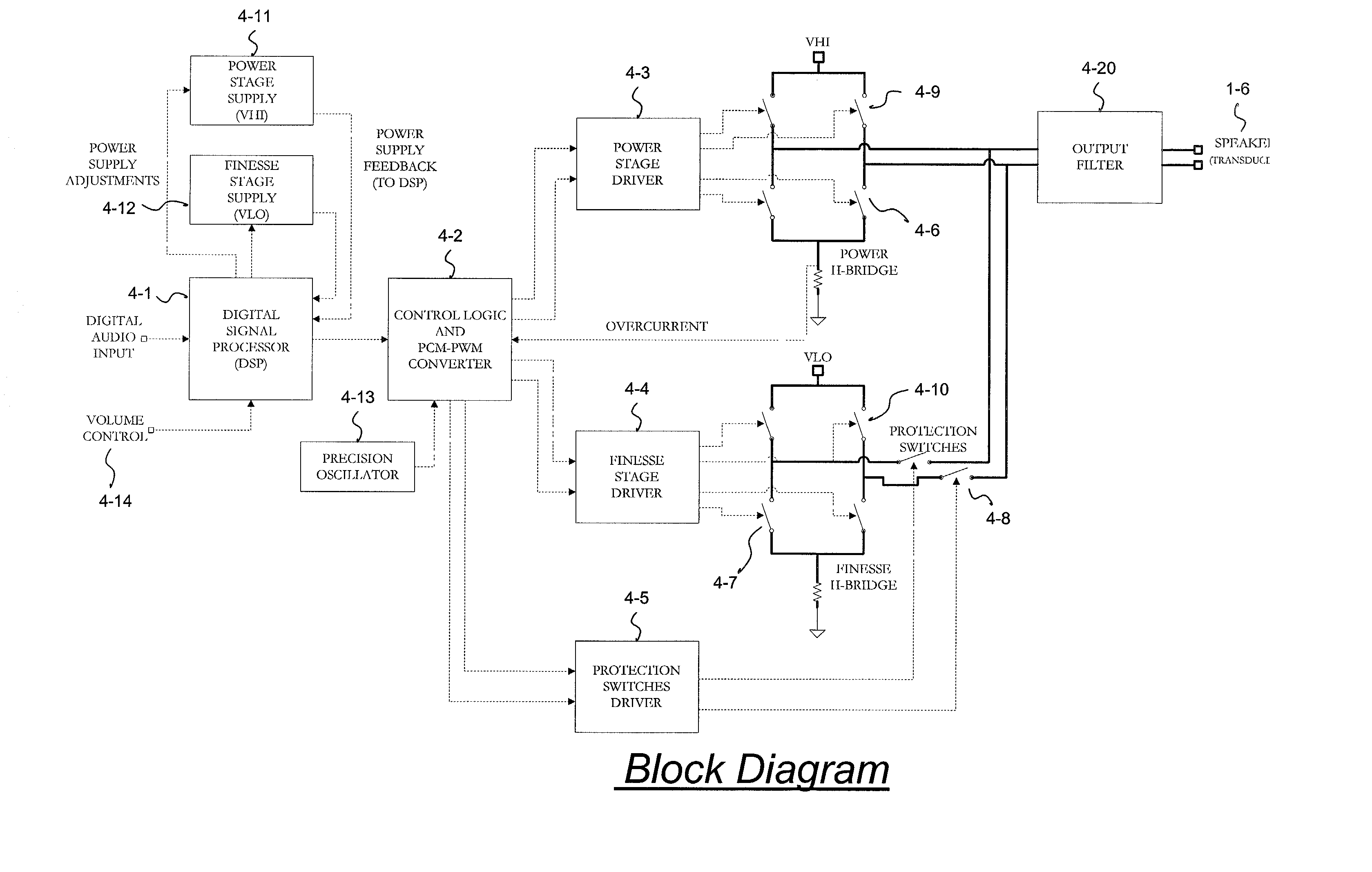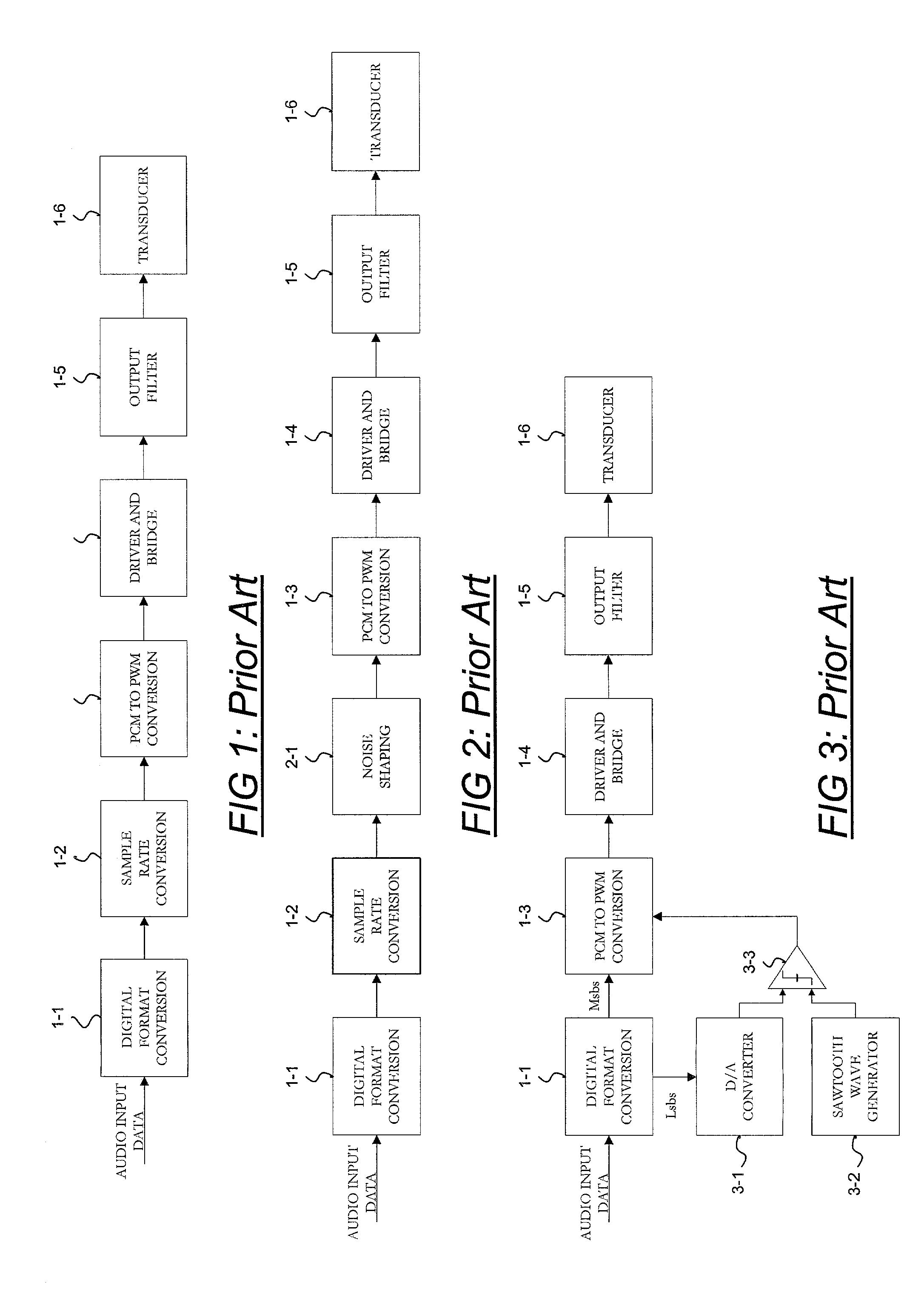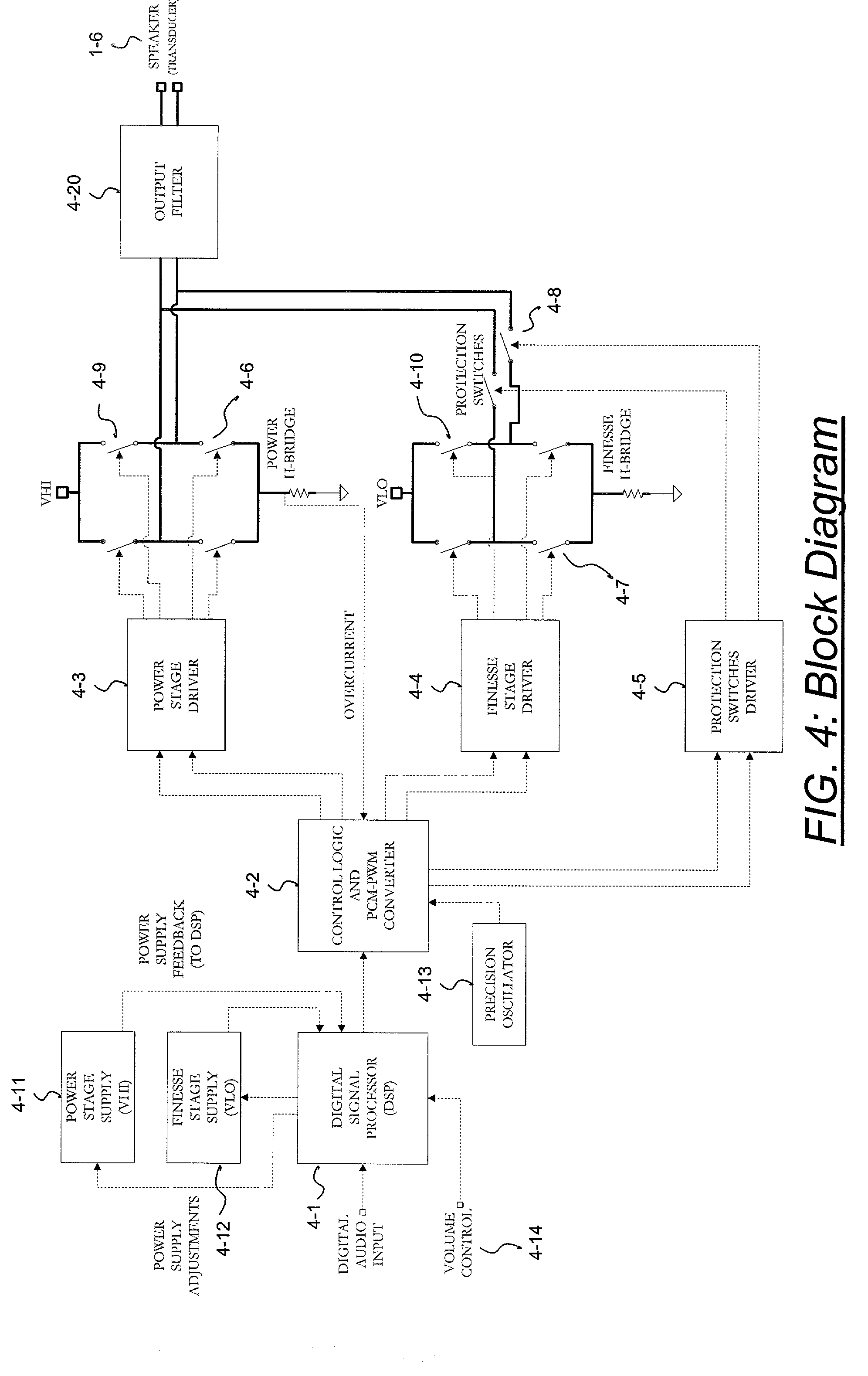Digital amplifier with improved performance
a digital amplifier and performance technology, applied in the field of digital amplifiers, can solve the problems of unreasonable clock rate, noise-shaping filter reducing the required resolution of input signals, and limitations of this topology for audio cds, so as to improve linearity, improve the effect of linearity and reduce the total harmonic distortion
- Summary
- Abstract
- Description
- Claims
- Application Information
AI Technical Summary
Benefits of technology
Problems solved by technology
Method used
Image
Examples
example # 2
3.4. EXAMPLE #2
20 Bit, 96 KHz Input Audio
[0026] As a second example, consider a two-output stage amplifier for use with 20 bit, 96 Khz input audio. Each input audio sample could be split into 2 packets of 10-bit samples, with one packet for each output stage. The packets would consist of 8, 7-bit samples at an oversampling rate of 8*96 KHz=768 KHz. The period of each switching cycle ({fraction (1 / 768)} KHz) is broken up into two sections with the pulse from output stage #1 occupying the first half of the period and the pulse from output stage #2 occupying the second half of the period. In order to get 7 bits of resolution for each pulse a master clock of (2)*(2.sup.7)*768 KHz=196 MHz is used to clock the control logic which distributes the pulses. In order to reconstruct the input audio signal, the power supplies of the two output stages in this example, must be calibrated to have a ratio of 1024:1. As with the 16-bit example, the resolution of the above amplifier is increased by 1....
PUM
 Login to View More
Login to View More Abstract
Description
Claims
Application Information
 Login to View More
Login to View More - R&D
- Intellectual Property
- Life Sciences
- Materials
- Tech Scout
- Unparalleled Data Quality
- Higher Quality Content
- 60% Fewer Hallucinations
Browse by: Latest US Patents, China's latest patents, Technical Efficacy Thesaurus, Application Domain, Technology Topic, Popular Technical Reports.
© 2025 PatSnap. All rights reserved.Legal|Privacy policy|Modern Slavery Act Transparency Statement|Sitemap|About US| Contact US: help@patsnap.com



